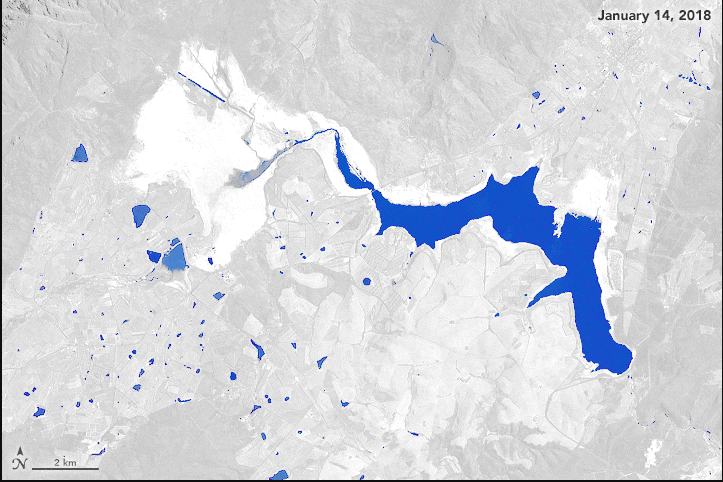As Cape Town residents begin a new month with tighter water restrictions, images released by NASA’s Earth Observatory show the dramatic drop in one of the City’s most important water reserves, Theewaterskloof Dam, over the past four years.
Consecutive winters of low rainfall have resulted in dam levels across the Western Cape dropping dramatically. The satellite images Theewaterskloof Dam were taken at two-year intervals – on 3 January 2014, 9 January 2016 and 14 January 2018 – and show the extent to which the dam level has dropped.
According to NASA, Theewaterskloof was near full capacity in 2014. During the preceding year, the weather station at Cape Town airport tallied 682 millimeters (27 inches) of rain (515 mm is normal), making it one of the wettest years in decades. However, rains faltered in 2015, with just 325 mm falling. The next year, with 221 mm, was even worse. In 2017, the station recorded just 157 mm of rain.
Theewaterskloof Dam is the City’s largest reservoir responsible for around half the City’s water supply. Collectively, Cape Town’s dam levels currently sit at just above 26% of capacity.
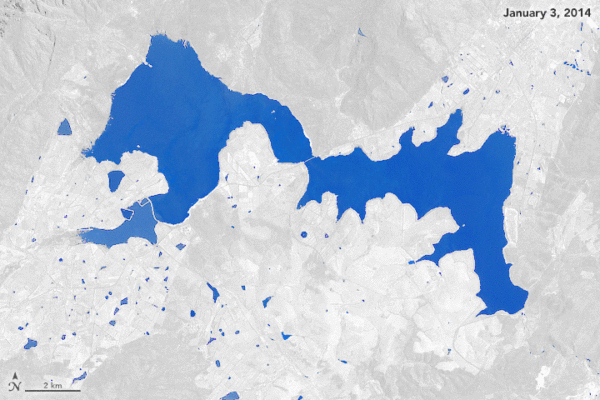
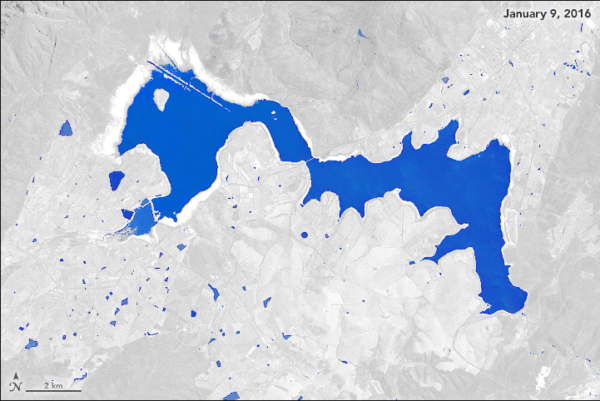
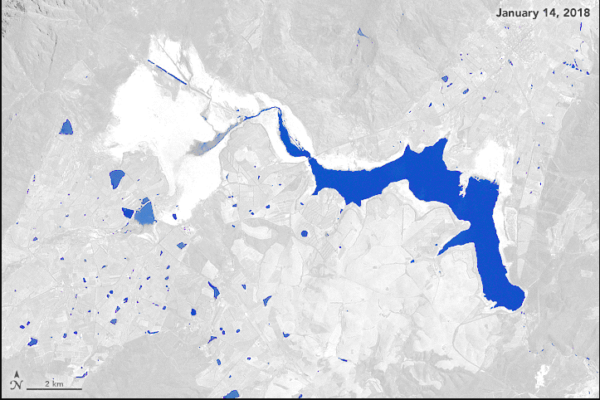
NASA also released a graph detailing how water levels in the City’s six key reservoirs have changed since 2013.
“Though the reservoirs are replenished each winter as the rains arrive, the trend at almost all of them has been downward. The one exception is Upper Steenbras, which holds about 4 percent of the city’s water and has been kept full because it is also used to generate electricity during peak demand. Also, the city is likely drawing down the largest reservoirs first to minimize how much water is lost to evaporation,” NASA said.
“Population growth and a lack of new infrastructure has exacerbated the current water shortage. Between 1995 and 2018, the Cape Town’s population swelled by roughly 80 percent. During the same period, dam storage increased by just 15 percent.”
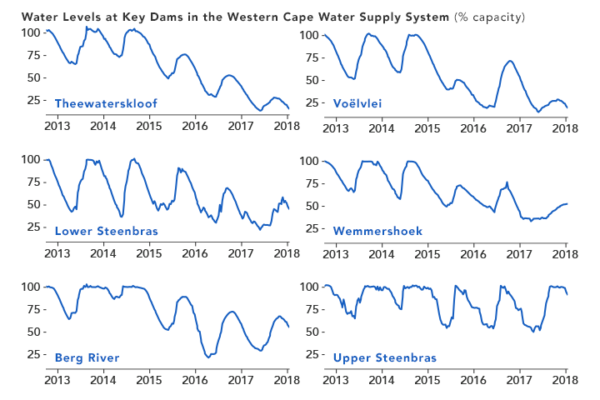
On Wednesday, CNN also released satellite images supplied by planet.com that show how Theewaterskloof Dam has dried up. The dam is only 13 percent full this week — down a full percent from last week.
https://twitter.com/twitter/statuses/958773266272878592




